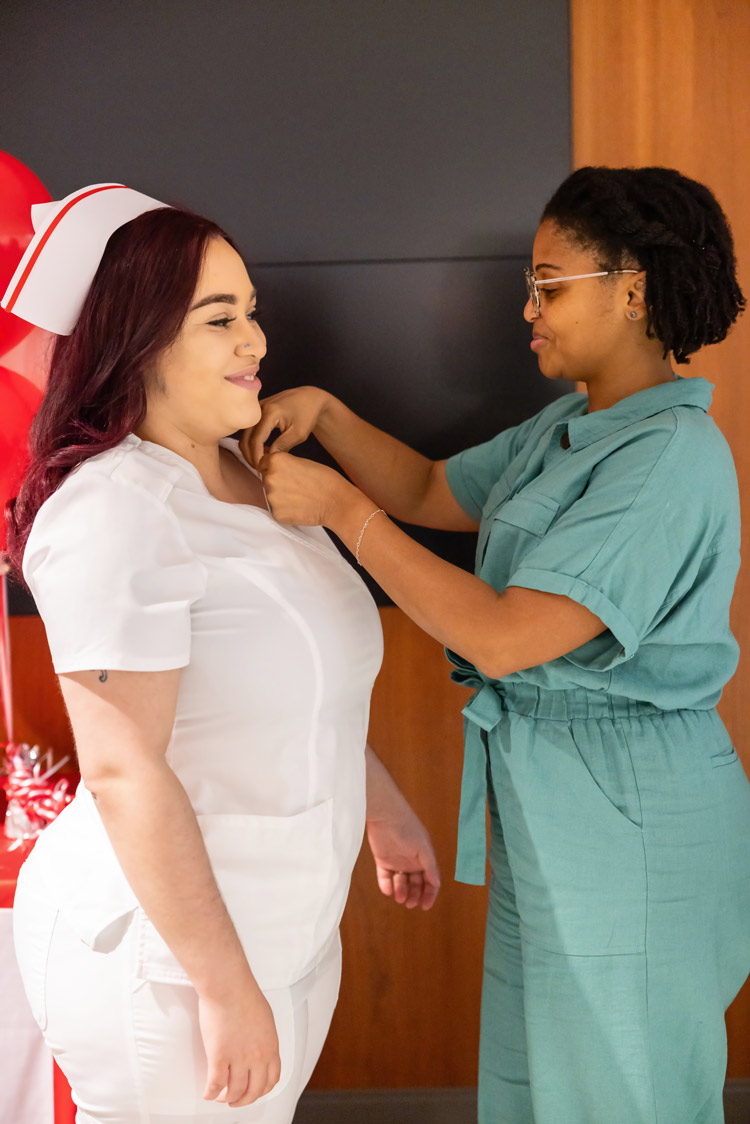
There are few moments in a nursing student’s journey as powerful and symbolic as the nurse pinning ceremony. While graduation may mark the completion of academic requirements, the pinning ceremony represents something much more personal: the transition from student to nurse, from learner to healer.
This heartfelt ritual doesn’t just celebrate scholastic achievement—it honors the emotional, ethical, and clinical growth that has taken place. For many, it’s the true culmination of the nursing journey.
Whether you’re preparing for your own pinning or attending as a proud supporter, understanding the history, traditions, and significance behind this milestone makes the experience even more meaningful.
What is a Nurse Pinning Ceremony?
A nurse pinning ceremony is a time-honored event that commemorates the completion of a nursing program. Unlike a commencement ceremony shared with graduates from many fields, the pinning ceremony is reserved exclusively for those entering the nursing profession.
This special event is often smaller, more intimate, and incredibly emotional. Students receive a nursing pin, symbolizing their readiness to enter the profession and care for others. For many nurses, this ceremony is even more significant than graduation—it represents not just what they’ve achieved, but who they’ve become
What Does It Symbolize?
The pin is more than a keepsake; it signifies a promise to uphold the values of the profession—compassion, integrity, and dedication. It also pays tribute to the sacrifices and growth a student has undergone: long hours, challenging clinicals, and a steadfast commitment to helping others.
The moment of pinning marks a turning point. It's a public acknowledgment that the individual is ready to take on the responsibility of caring for others and upholding the highest standards in health care.
What Happens During the Ceremony?
While each school or institution may tailor the ceremony to its own traditions, some common elements include:
- A welcome message from faculty or nursing leaders
- Speeches from instructors, alumni, or students
- The lighting of a lamp or candle, paying tribute to Florence Nightingale
- Each graduate being “pinned” by a person of their choosing
- Recitation of the Nightingale Pledge, a vow of ethical nursing practice
- A slideshow, musical performance, or moment of reflection
The atmosphere is often a blend of quiet reverence and joyful celebration. Family and friends cheer, photos are snapped, and tears are not uncommon.
History of Nurse Pinning Ceremony
The history of nurse pinning ceremony dates back nearly a millennium, with origins rooted in service and sacrifice. The tradition began during the Crusades, when the Knights of the Order of the Hospital of St. John of Jerusalem were awarded a Maltese Cross for their care of the sick and injured.
Centuries later, Florence Nightingale—widely regarded as the founder of modern nursing—received a brooch from Queen Victoria as a token of gratitude for her dedication during the Crimean War. This brooch became a symbol of nursing excellence.
By the early 20th century, nursing schools in the United States began adopting their own pins and ceremonies to honor graduates. Each pin carried unique design elements representative of the school’s philosophy and values.
Today, the pinning ceremony remains a powerful connection to nursing’s rich legacy—one that continues to evolve while preserving its symbolic roots.
Who Pins You at Nursing Pinning Ceremony
Choosing who pins you at nursing pinning ceremony is one of the most personal and meaningful decisions a graduate can make.
This honor is typically given to someone who has offered unwavering support throughout the journey. It might be:
- A parent or guardian who provided emotional strength
- A spouse or partner who endured long nights and early mornings alongside you
- A sibling or friend who cheered you on
- A mentor, clinical instructor, or professor who inspired your professional growth
The act of pinning is a beautiful expression of gratitude—a moment to recognize the people who helped you get to this day. For the person doing the pinning, it’s a profound moment of pride.
What to Wear to a Nurse Pinning Ceremony
The question of what to wear to a nurse pinning ceremony is about more than fashion—it’s about honoring the importance of the occasion.
What Do Participants Wear?
Graduates usually wear white—either in the form of traditional nursing uniforms, tailored scrub sets, or professional whites. This choice is symbolic, representing purity, readiness to serve, and a clean start in the profession. Some schools include nursing caps or sashes, while others keep the look modern and minimal.
What Should Guests to the Ceremony Wear?
Guests are typically encouraged to wear business casual or semi-formal attire. Because this is a significant event, respectful and polished clothing is appropriate. Think dresses, button-down shirts, blouses, or slacks. Comfortable shoes are recommended if there is a reception or standing component to the event.
When is the Pinning Ceremony for Nursing
So, when is the pinning ceremony for nursing students typically held? Usually, it occurs at the end of a nursing program—after final exams and clinicals, but before or just after the official graduation ceremony.
In many cases, it precedes the licensing exam (NCLEX-RN or NCLEX-PN), providing emotional closure before embarking on the professional phase of the nursing journey.
The timing gives students a chance to pause and reflect on all they’ve accomplished before stepping into the high-stakes world of patient care. It’s the calm before the next big leap—and a much-deserved celebration of endurance, growth, and purpose.
Bringing it All Together
The nurse pinning ceremony is not just a ritual—it’s a story. A story of perseverance, long nights, personal transformation, and unwavering dedication to helping others. It honors the legacy of nurses who came before and welcomes new ones who are ready to take the torch.
In a world that increasingly needs skilled, compassionate healthcare professionals, this ceremony serves as a sacred reminder of what it means to be a nurse—not just in title, but in heart and spirit.
Thinking of beginning your own nursing journey? Explore nursing programs in your area that offer strong clinical experiences, a supportive learning environment, and opportunities to participate in this powerful

